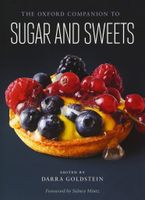Advertisement
Banquets and Desserts
Published 2015
The Forme of Cury (the first British cookery book), compiled in the late fourteenth century, was written for informed, sophisticated palates. It makes clear that some savory and sweet dishes were served together. Small game birds appeared on the table with tarts, fritters, preserved fruits, and the sweet wafers introduced by the Normans.
This pattern of dining remained until the sixteenth century, when sweet dishes could also become a banquet laid out in a separate room or a special building. See banqueting house. As a show of wealth, the table was decorated with sugar-paste sculptures and spread with candied fruits and nuts, quince paste, marchpanes (marzipan), jellies, almond cakes, fruits made from sugar, and even tableware of sugar paste that could be eaten. See marzipan and sugar sculpture. The Elizabethans called these dishes and the sweet, spiced wines that accompanied them “banketting stuffe.”


